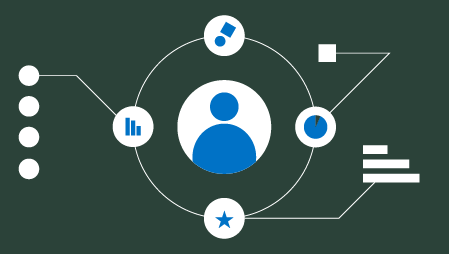Which technology skills are employers looking for in data analysts? How do they compare to the skills desired for data engineers and data scientists?

I analyzed online job listings from January 2020 to find the answers. In this article, I’ll share the answers and provide a suggested learning path for aspiring data analysts.
This is my third article looking at technology skills in data-intensive positions. See the previous articles on data scientists here and data engineers here.
Without further ado, here are the top 10 technologies from data analyst job listings as of January 2020.

Data Analyst Role
Data analysts turn data into information. They play a vital role by making data actionable for decision makers.
Data analysts often take data provided by data engineers, analyze it, and make recommendations. They create visualizations to display their findings in dashboards and presentation.
Unlike data scientists, data analysts don’t usually create predictive models based on machine learning algorithms.
Method
I scraped information from SimplyHired, Indeed, and Monster, to see which keywords appeared with “Data Analyst” in job listings in the United States. I used the Requests and Beautiful Soup Python libraries.



I used the same keywords gleaned from my analysis of data scientist and data engineer job listings. LinkedIn was not searched because it previously locked me out of my account after scraping its site.
For each job search website, I calculated the percentage of total data analyst job listings for that site that each keyword appeared in. Then I averaged those percentages across the three sites for each keyword.
Results
Here is an expanded chart showing the 30 most common technologies.

Here’s the same data in tabular form.

Many other technology keywords were searched; these were the 30 highest scoring. Let’s look at the most common technologies.
Discussion

SQL is short for Structured Query Language. It shows up in over half of all listings. SQL is used for working with relational databases. SQL comes in many flavors, including MySQL, Oracle, SQL Server, PostgreSQL, and SQLite. Each version shares most of the same core API. There are quality free offerings.

Excel is almost as common as SQL. It’s the dominant spreadsheet program. It’s part of the Microsoft Office 365 suite of software tools. Although it can’t handle huge quantities of data like SQL databases, Excel is great for doing analysis quickly. Google Sheets is a competitor with a free version and similar core functionality.

Tableau shows up in about a quarter of listings. It’s drag-and-drop business intelligence software that makes it easy to create visualizations and dashboards. Tableau’s visualization capabilities are far better than Excel’s. Tableau has a free public version, but if you want to keep data private you need to shell out some money.

Python shows up in about a quarter of listings. It’s a very popular free open source programming language for working with data, websites, and scripting. It’s the primary language for machine learning.

R is also in over 20% of listings. It’s a popular free open source language for statistics, especially in academia.
Comparison with Data Engineer and Data Scientist
In previous articles I looked at the most in demand tech skills for data scientists and data engineers. How do the data analyst results compare?
The overall number of listings were 16,325 for Data Analyst, for 12,013 for Data Engineer, and 9,396 for Data Scientist. So data analyst jobs are relatively common.
The chart below shows the 10 most common technologies for data analyst listings. The scores for data scientist and data engineer listings are shown for each keyword, too.

- SQL is very popular for all three job positions.
- Excel is over four times more common in data analyst listings than data scientist and data engineer listings.
- Python, while found in about a quarter of data analyst listings, is about three times more popular in data scientist and data engineer job listings.
- R is much less common in data analyst and data engineer positions than in data scientist job listings.
- PowerPoint is much more commonly found in data analyst listings.
In terms of trends, my analysis of data scientist job listings showed that both R and SAS had large drops in popularity from 2018 to 2019.
It’s worth noting that many more technologies were mentioned in data engineer job listings than were mentioned in data analyst job listings.
Advice
If you want to become a data analyst or make yourself more marketable, I suggest you learn the following technologies, in order of priority.
Learn Excel. It’s quicker to pick up than SQL. I knew Excel from school and work, but I learned it better by studying for a Microsoft Excel certification exam. If you are a self-directed learner, the official certification or a MOOC course could be worth your time.
Learn SQL. If you don’t know a programming language, it’s a good first one to learn. .

Learn Tableau. Tableau allows you to make great visualizations quickly with a drag and drop interface. .
Show you can make a PowerPoint presentation. There are many MOOCs that teach Microsoft PowerPoint.
If you have demonstrated you can use the above technologies to analyze and communicate you should be a decent candidate for many entry level positions.
If you know the above skills and want to learn new skills or qualify for more positions, I suggest you learn Python. Python is great if you want to move into data engineering and data science.
My Memorable Python book is designed for beginners. It’s available for Kindle and hard copy from Amazon and in .epub and .pdf form here.

Once you know basic Python, learn pandas. Pandas is a Python library for working with data. If you are looking for a data job that requires Python, you will probably be expected to have pandas skills, too.

That might sound like a long list, but just take it one step at a time. Recognize that it will take time and there will be ups and downs. You can do it — just persist!
I suggest you learn and demonstrate your skills by working on projects you can include in a personal portfolio. Then you can learn by doing things you like! You’ll also have a body of work that shows potential employers your skills. For a quick guide to setting up a portfolio site, see this article.
Wrap
I hope you found this guide to the most in demand technologies for data analysts useful.





